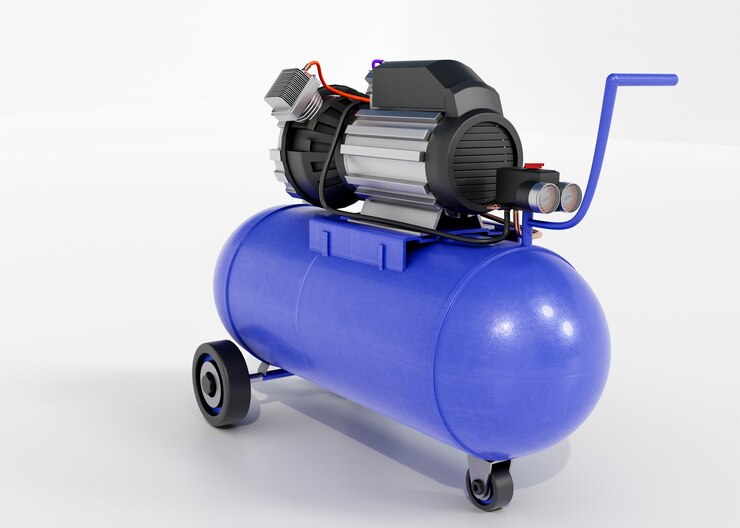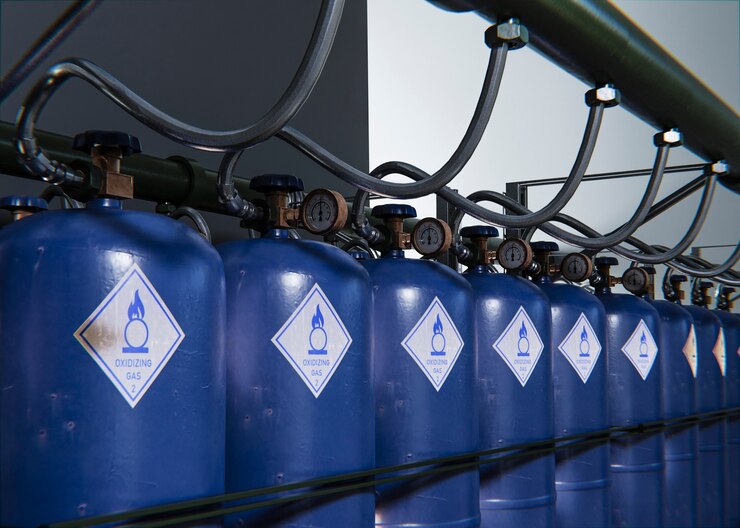LST Compressor: Everything You Need to Know
LST compressors (low starting torque compressors) are integral components in refrigeration systems. Designed to start up using less electrical current than other compressor types, LSTs provide greater energy efficiency and cost-effectiveness – they’re often seen in grocery stores or restaurants.

LST compressors differ from other compressors primarily in their starting characteristics; they require less electrical current to kick start them, enabling smaller electrical components and increasing energy efficiency. As such, LSTs offer businesses looking to reduce energy consumption and operating costs an attractive solution.
Design and engineering of LST compressors are integral parts of their performance. Although designed to operate with low starting current requirements, they must also deliver enough cooling power for refrigeration systems requiring them. Therefore, extensive engineering and testing must take place to ensure reliable performance of these compressors.
Key Takeaways
- LST compressors are energy-saving and cost-cutting components in refrigeration systems, offering significant cost-savings compared to their counterparts.
- Companies looking to reduce energy usage and operational costs should find these attractive. They typically require lower levels of electrical current to start, making them an appealing option.
- Design and engineering are key aspects of LST compressors, ensuring that they are reliable and efficient.
Fundamentals of LST Compressors
LST compressors are commonly found in refrigeration systems. “Low Starting Torque,” as their name suggests, refers to how these compressors require less power for starting up than other types of compressors.
LST compressors stand out as being more energy-efficient than their counterparts due to requiring less power for start-up, thus using less overall energy – leading to significant cost savings over time if used in large refrigeration systems.
LST compressors are ideal for applications where quick startup times and efficiency are essential, such as commercial refrigeration systems found in grocery stores or restaurants.
LST compressors boast another advantage of being relatively quiet compared to other types of compressors; this is due to not requiring as much power for startup purposes, leading to reduced noise emission.
LST compressors boast another advantage of being relatively quiet compared to other types of compressors; this is due to not requiring as much power for startup purposes, leading to reduced noise emission.
Design and Engineering
Core Components
Core Components LST compressors are constructed using key components that ensure their effective functioning, with one of the key pieces being their motor. It must feature low starting torque (LST), which ensures smooth startup by employing motors with high resistance to locked rotor amperage (LRA). Furthermore, its design also guarantees it achieves high energy efficiency ratings to reduce energy consumption.
Another crucial component of a compressor is its valve system. This component works to ensure smooth and efficient operations of the compressor by opening and closing at specific times to facilitate smooth refrigerant flow through its compressor. It includes suction and discharge valves as well as control devices designed to ensure safe operations of its parts.
Material Selection What’s the Key?
LST compressor materials play a critical role in their performance and durability. Compressor casings typically feature high-grade materials like cast iron or aluminum for their strength, durability and resistance to corrosion.
Compressor internal components, including its piston and connecting rod, are typically constructed of top-of-the-line materials. Such as steel or aluminum for their strength and durability.
Thermodynamic Principles
LST compressor designs follow thermodynamic principles to maximize performance and efficiency, taking into account factors like refrigerant thermodynamic properties, displacement capacity requirements and efficiency rating as part of their design.
Optimizing a compressor’s thermodynamic performance involves selecting its components carefully and optimizing their performance through software and testing, so as to meet specific pressure and temperature levels.
Overall, LST compressor design and engineering relies on core components, material selection and thermodynamic principles to ensure efficient, smooth and dependable operations of their devices.
Operational Aspects
Efficiency Metrics
LST compressors are well known for their superior energy efficiency and low starting torque. Their design allows them to run at lower speeds, which reduces energy use when starting or running the compressor resulting in reduced operating costs and energy consumption. Furthermore, these compressors can operate across a wide temperature and pressure range making them suitable for various applications.
To accurately evaluate an LST compressor’s efficiency, various metrics may be employed, including its coefficient of performance (COP) and energy efficiency ratio (EER). COP is defined as the ratio between heat absorbed by refrigerant and energy consumed by compressor, while EER refers to cooling capacity vs power consumed. Both metrics allow one to compare various compressors’ efficiency as well as identify areas for improvement.
Maintenance Procedures
Regular maintenance is essential to ensure the optimal performance and longevity of an LST compressor. Some common maintenance procedures include checking and replacing lubricants, inspecting and cleaning the condenser and evaporator coils, and checking and adjusting the refrigerant charge. It is also important to inspect the compressor and its components for signs of wear and damage, and to replace any damaged parts as necessary.
To ensure the safety of personnel and equipment, it is important to follow the manufacturer’s recommended maintenance procedures and to use the appropriate tools and equipment. In addition, it is important to follow proper safety protocols, such as wearing personal protective equipment and following lockout/tagout procedures when working on the compressor.
Safety Protocols
LST compressors can be dangerous if not handled properly. To ensure the safety of personnel and equipment, it is important to follow proper safety protocols when working on or around the compressor. This includes wearing appropriate personal protective equipment, such as safety glasses, gloves, and hearing protection.
In addition, it is important to follow lockout/tagout procedures when working on the compressor. This involves isolating the compressor from its power source and locking or tagging the power source to prevent accidental startup. It is also important to follow proper electrical safety protocols, such as grounding the compressor and using appropriate electrical equipment and tools.
By following proper maintenance and safety procedures, LST compressors can provide reliable and efficient performance for many years.
Applications of LST Compressors

LST compressors are widely used in various industries and sectors due to their low starting torque and energy efficiency. In this section, we will discuss the applications of LST compressors in two main areas: industrial uses and the energy sector.
Industrial Uses
LST compressors are commonly used in refrigeration and air conditioning systems for commercial and industrial applications. They are suitable for use in systems with capillary tubes because they have a low starting torque, which makes them ideal for systems with short off-cycles. LST compressors are also used in systems with low back-pressure, such as those used in refrigeration and air conditioning units in supermarkets, convenience stores, and other commercial buildings.
In addition, LST compressors are used in industrial refrigeration systems, such as those used in food processing plants, breweries, and cold storage facilities. These compressors are designed to operate at high efficiency levels, which helps to reduce energy consumption and operating costs. They are also used in heat pumps, which are used to extract heat from the air or ground and transfer it to a building or industrial process.
Energy Sector
LST compressors are also used in the energy sector, particularly in the oil and gas industry. They are used in gas compression systems, which are used to compress natural gas and other gases for transportation through pipelines. LST compressors are ideal for use in gas compression systems because they require less energy to start and operate, which helps to reduce operating costs and increase efficiency.
In addition, LST compressors are used in refrigeration and air conditioning systems in the energy sector, such as those used in power plants and other industrial facilities. These compressors are designed to operate at high efficiency levels, which helps to reduce energy consumption and operating costs. They are also used in heat pumps, which are used to extract heat from the air or ground and transfer it to a building or industrial process.
Overall, LST compressors are widely used in various industries and sectors due to their low starting torque and energy efficiency. They are suitable for use in refrigeration and air conditioning systems, as well as gas compression systems and heat pumps.
Innovations and Advancements

Technological Developments
The LST compressor has undergone several technological advancements in recent years, making it a highly efficient and reliable machine. One of the most significant developments is the use of variable speed drive (VSD) technology, which allows the compressor to adjust its speed according to the demand for compressed air. This not only reduces energy consumption but also extends the life of the compressor.
Another technological development is the use of oil-free technology in the LST compressor. This eliminates the need for oil changes, reduces maintenance costs, and ensures that the compressed air is free of oil contamination. The LST compressor also features advanced control systems that allow for remote monitoring and control, making it easier for operators to manage the compressor from a distance.
Future Trends
Looking ahead, there are several trends that are likely to shape the future of LST compressor technology. One of these is the increasing use of artificial intelligence (AI) and machine learning (ML) in compressor control systems. This technology will enable compressors to optimize their performance automatically, reducing energy consumption and improving efficiency.
Another trend is the growing demand for compressed air in various industries, including automotive, food and beverage, and healthcare. As a result, there is likely to be a continued focus on developing compressors that are more efficient, reliable, and cost-effective.
Overall, the LST compressor is a highly advanced and innovative machine that has undergone several technological developments in recent years. With the use of VSD technology, oil-free technology, and advanced control systems, the LST compressor is a reliable and efficient solution for compressed air needs. Looking ahead, the continued focus on AI and ML in compressor control systems and the growing demand for compressed air in various industries will likely drive further advancements in LST compressor technology.



